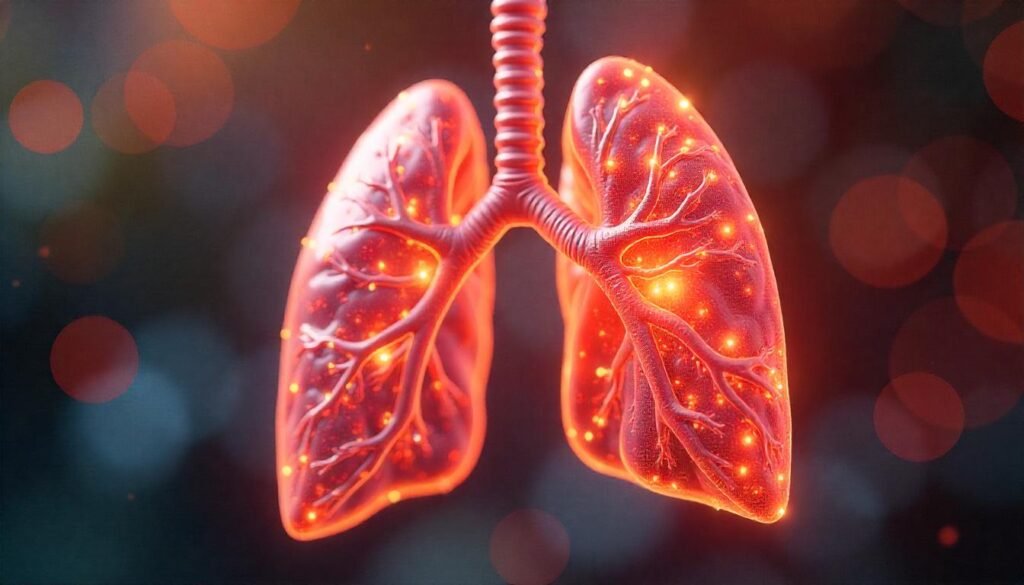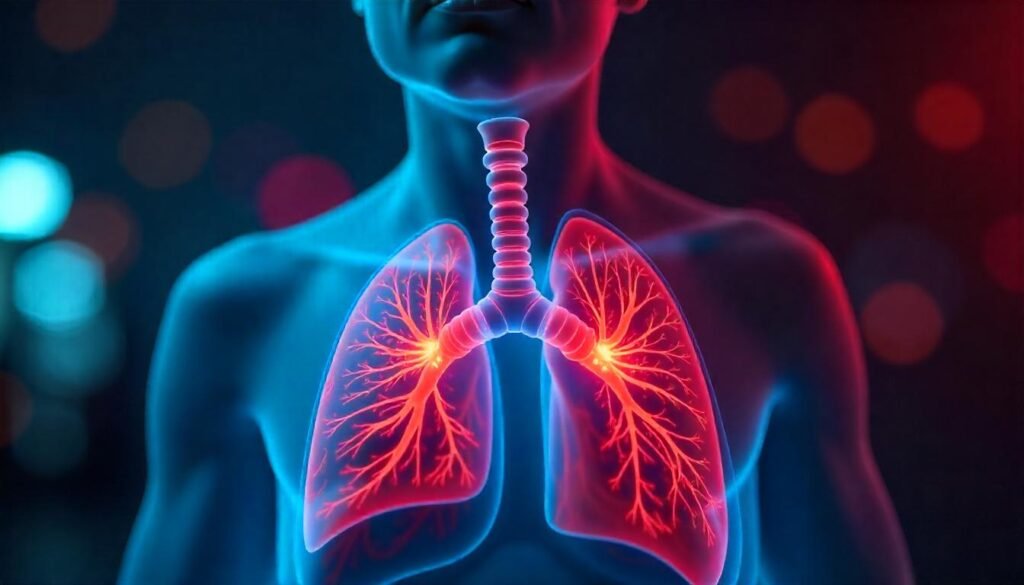Introduction: What is Cystic Fibrosis Treatment?
This article examines the cystic fibrosis treatment.Cystic fibrosis (CF) is a genetic disorder that primarily affects the lungs and digestive system, leading to severe respiratory and nutritional complications. The condition results from mutations in the CFTR gene, which is responsible for regulating salt and water movement in and out of cells. This dysfunction leads to the production of thick, sticky mucus that clogs airways and traps bacteria, resulting in chronic infections and inflammation. Given the complexity of CF, effective cystic fibrosis treatment is crucial for improving the quality of life and longevity of those affected. This article aims to provide a comprehensive overview of cystic fibrosis treatment options, emphasizing the importance of a multifaceted approach tailored to individual needs.

Table of Contents
The Importance of Early Diagnosis and Treatment
Early diagnosis of cystic fibrosis is critical for effective management. Newborn screening programs have significantly improved early detection rates, allowing for prompt intervention. cystic fibrosis treatment strategies are most effective when started early, as they can help maintain lung function and nutritional status. The following sections will explore various treatment modalities available for managing cystic fibrosis.
1. Respiratory Therapies
1.1 Airway Clearance Techniques
Airway clearance techniques, commonly referred to as ACTs, play a crucial role in assisting individuals who are living with cystic fibrosis in effectively clearing mucus from their lungs. These important techniques encompass a variety of methods designed to improve lung function and reduce the risk of infections. Examples of these techniques include:
- Chest Physiotherapy (CPT): This therapeutic approach encompasses various techniques, including manual percussion and postural drainage, which are specifically designed to aid in loosening mucus from the airways of the lungs. The manual percussion involves rhythmically clapping on the chest and back, which creates vibrations that help to mobilize mucus. Postural drainage utilizes specific body positions to allow gravity to assist in the drainage of mucus from different regions of the lungs. Together, these methods work to improve respiratory health and enhance overall lung function.
- Positive Expiratory Pressure (PEP) Devices: These innovative devices are engineered to generate pressure within the airways, which serves a crucial role in helping to keep them open. By doing so, they actively facilitate the clearance of mucus from the respiratory tract. PEP devices typically require the patient to exhale against a resistance, which promotes the opening of smaller airways and aids in the movement of mucus toward larger airways for easier expectoration. This method not only aids in mucus clearance but also enhances overall breathing capability.
- High-Frequency Chest Wall Oscillation (HFCWO): This cystic fibrosis treatment involves the use of a specialized vest that the patient wears, which is equipped with technology that produces gentle vibrations. The vibrations are designed to loosen and dislodge mucus trapped within the airways, making it easier for the patient to expel it. The oscillations can be adjusted to provide varying levels of intensity, allowing for a customized Cystic Fibrosis Treatment experience based on the individual patient’s needs. By promoting the clearance of mucus, HFCWO contributes significantly to maintaining good lung hygiene and preventing respiratory complications.

Incorporating these techniques into daily routines can significantly reduce the risk of lung infections and improve overall lung function.
1.2 Inhaled Medications
Inhaled medications play a crucial role in managing cystic fibrosis. Key medications include:
- Bronchodilators play a crucial role in respiratory care as these medications are designed to assist in widening and relaxing the airways. By doing so, they significantly facilitate the process of breathing, allowing individuals to take in air more comfortably and efficiently. This is particularly important for patients suffering from conditions that cause airway constriction, as it helps alleviate symptoms associated with difficulty in breathing.
- Mucolytics, such as Dornase alfa, are specialized medications that serve to break down and thin out mucus within the respiratory tract. This thinning action not only eases the burden of mucus accumulation but also promotes its expulsion from the lungs, thus improving overall lung function and comfort. For individuals who experience excessive mucus production, mucolytics can be essential in enhancing their ability to clear respiratory secretions and breathe more freely.
- Antibiotics are another vital component in the management of respiratory issues, particularly when it comes to fighting bacterial infections within the lungs. Inhaled antibiotics, including tobramycin, are formulated to deliver targeted cystic fibrosis treatment directly to the site of infection. This localized approach increases the effectiveness of the medication in combating harmful bacteria, thereby helping to restore respiratory health and prevent further complications associated with infections.

The consistent utilization of these inhaled therapies can result in noticeable improvements in lung function over time, as well as a significant reduction in the frequency and severity of pulmonary exacerbations, ultimately contributing to better overall respiratory health.
2. Nutritional Support
2.1 Importance of Nutrition in Cystic Fibrosis
Individuals with cystic fibrosis often struggle with malabsorption due to pancreatic insufficiency. This condition necessitates a high-calorie, high-fat diet to meet their nutritional needs. Key components of nutritional support include:
- Pancreatic Enzymes: These specific dietary supplements play a crucial role in enhancing the digestion process of food. By aiding in the breakdown of complex nutrients, they ensure that the body can adequately absorb essential nutrients, which is vital for overall health and well-being, especially in individuals who may struggle with digestion.
- Vitamin Supplements: Among the many vitamins, fat-soluble vitamins, which include A, D, E, and K, are frequently found to be lacking in individuals and thus necessitate regular supplementation. These vitamins are important for various bodily functions, and ensuring their proper intake through supplements can help maintain optimal health levels and prevent deficiencies.
- Nutritional Counseling: Engaging in nutritional counseling with a dietitian who specializes in cystic fibrosis can be extremely beneficial. Such professionals can help create and customize dietary plans that cater to the unique needs and challenges of individuals affected by this condition. This personalized approach can greatly enhance dietary management and overall nutritional status.
It is crucial to maintain optimal nutrition, as it plays a vital role in supporting lung function along with contributing to overall health and well-being. Ensuring that our diet is rich in essential nutrients can significantly enhance respiratory capabilities and promote a healthier body overall.

3. Pharmacological Cystic Fibrosis Treatment
3.1 CFTR Modulators
CFTR modulators represent a revolutionary category of medications specifically developed to address and rectify the issues associated with the malfunctioning CFTR protein. These innovative therapies encompass a range of cystic fibrosis treatment options aimed at improving the function of this critical protein, which is essential for maintaining proper salt and fluid balance in various tissues. The categories of these therapies include:
- Ivacaftor: This medication works by enhancing and improving the functionality of the defective CFTR protein that is associated with cystic fibrosis. By doing so, it helps to facilitate better chloride ion transport across the cell membranes, which is crucial for maintaining proper airway hydration and mucociliary clearance.
- Lumacaftor/Ivacaftor Combination: This combination therapy is designed to address the processing and functionality of the CFTR protein specifically in individuals who carry certain mutations. By working together, these two agents contribute to the proper folding and deployment of the CFTR protein in the cell membranes, ultimately improving its function and helping to alleviate some of the symptoms associated with the disease.
These medications have demonstrated significant effectiveness in enhancing lung function and are capable of substantially decreasing the frequency of pulmonary exacerbations in patients who meet the necessary eligibility criteria. The observed improvements indicate a positive impact on overall respiratory health for those who are appropriate candidates for cystic fibrosis treatment.

3.2 Antibiotic Therapy
Chronic lung infections frequently occur in individuals with cystic fibrosis, which makes the use of antibiotic therapy absolutely crucial for managing their condition. Therefore, the cystic fibrosis treatment may encompass a variety of approaches, including:
- Oral Antibiotics: These medications are commonly prescribed by healthcare professionals for the cystic fibrosis treatment of mild to moderate infections. They function by effectively targeting and combating bacterial growth within the body, ultimately helping to alleviate a range of symptoms that are associated with various infectious conditions. By taking oral antibiotics as directed, patients can expect a gradual improvement in their health, as these drugs work to reduce the bacterial load and enhance the body’s natural healing processes. It is important for individuals to complete the full course of their prescribed oral antibiotics to ensure that the infection is fully eradicated and to prevent the development of antibiotic resistance, which can occur if the treatment is interrupted or not taken as advised.
- Intravenous Antibiotics: These medications are specifically utilized in clinical settings for the treatment of severe infections or in instances where oral antibiotic cystic fibrosis treatment has been deemed ineffective. The intravenous administration of antibiotics allows for direct entry into the bloodstream, which can result in a more immediate and powerful therapeutic effect compared to oral alternatives. This method is particularly crucial in urgent medical situations where a patient’s condition is deteriorating and demands rapid intervention. In such cases, administering intravenous antibiotics ensures that the infection is addressed promptly and effectively, allowing healthcare providers to manage severe symptoms and systemic effects of the infection. The use of IV antibiotics is often monitored closely in hospital settings to assess the patient’s response to treatment and make necessary adjustments, ensuring optimal outcomes.
Tailoring antibiotic therapy based on culture results ensures effective management of lung infections.

4. Advanced Therapies
4.1 Lung Transplantation
In cases of advanced lung disease, lung transplantation may be considered. This option is typically reserved for individuals with severe respiratory dysfunction and recurrent infections. Factors influencing candidacy include:
- Overall health status.
- Age and lung function.
- Presence of other medical conditions.
Lung transplantation can significantly improve quality of life and extend survival for selected patients.
4.2 Gene Therapy
Recent advances in the field of gene therapy are focusing on tackling the fundamental cause of cystic fibrosis by working to correct the mutation found in the CFTR gene. Although these innovative therapies are currently in the experimental phases of development, they show significant promise for potential cystic fibrosis treatment options in the future. Researchers are exploring various methodologies to effectively deliver the corrected gene to the affected cells, which could lead to substantial improvements in the quality of life for those living with this condition. As studies continue to progress, there is growing hope that these gene therapy approaches may ultimately pave the way for more effective and lasting solutions to manage cystic fibrosis.
Conclusion: A Holistic Approach to Managing Cystic Fibrosis
Managing cystic fibrosis requires a comprehensive and individualized approach. From respiratory therapies to nutritional support and advanced pharmacological cystic fibrosis treatment, each component plays a vital role in improving health outcomes. Continuous advancements in research and treatment options offer hope for individuals living with this challenging condition. It is essential for patients and caregivers to work closely with healthcare providers to develop a personalized treatment plan that addresses their unique needs.
FAQ Section
Q1: What is the life expectancy for individuals with cystic fibrosis?
A1: The life expectancy for individuals with cystic fibrosis has significantly improved, with many living into their 30s and beyond, thanks to advancements in cystic fibrosis treatment and care.
Q2: How often should airway clearance techniques be performed?
A2: It is generally recommended that airway clearance techniques be performed at least once or twice daily, but the frequency may vary based on individual needs and lung function.
Q3: Can cystic fibrosis be cured?
A3: Currently, there is no cure for cystic fibrosis, but ongoing research and advancements in cystic fibrosis treatment options aim to improve quality of life and manage symptoms effectively.
Q4: What role does exercise play in managing cystic fibrosis?
A4: Regular exercise is beneficial for individuals with cystic fibrosis, as it helps improve lung function, enhances overall fitness, and supports mental health.
Q5: Are there support groups for individuals with cystic fibrosis?
A5: Yes, numerous support groups and organizations provide resources, community support, and information for individuals and families affected by cystic fibrosis.
By understanding the multifaceted nature of cystic fibrosis cystic fibrosis treatment, patients and caregivers can navigate the complexities of this condition, ultimately leading to improved health outcomes and enhanced quality of life.


